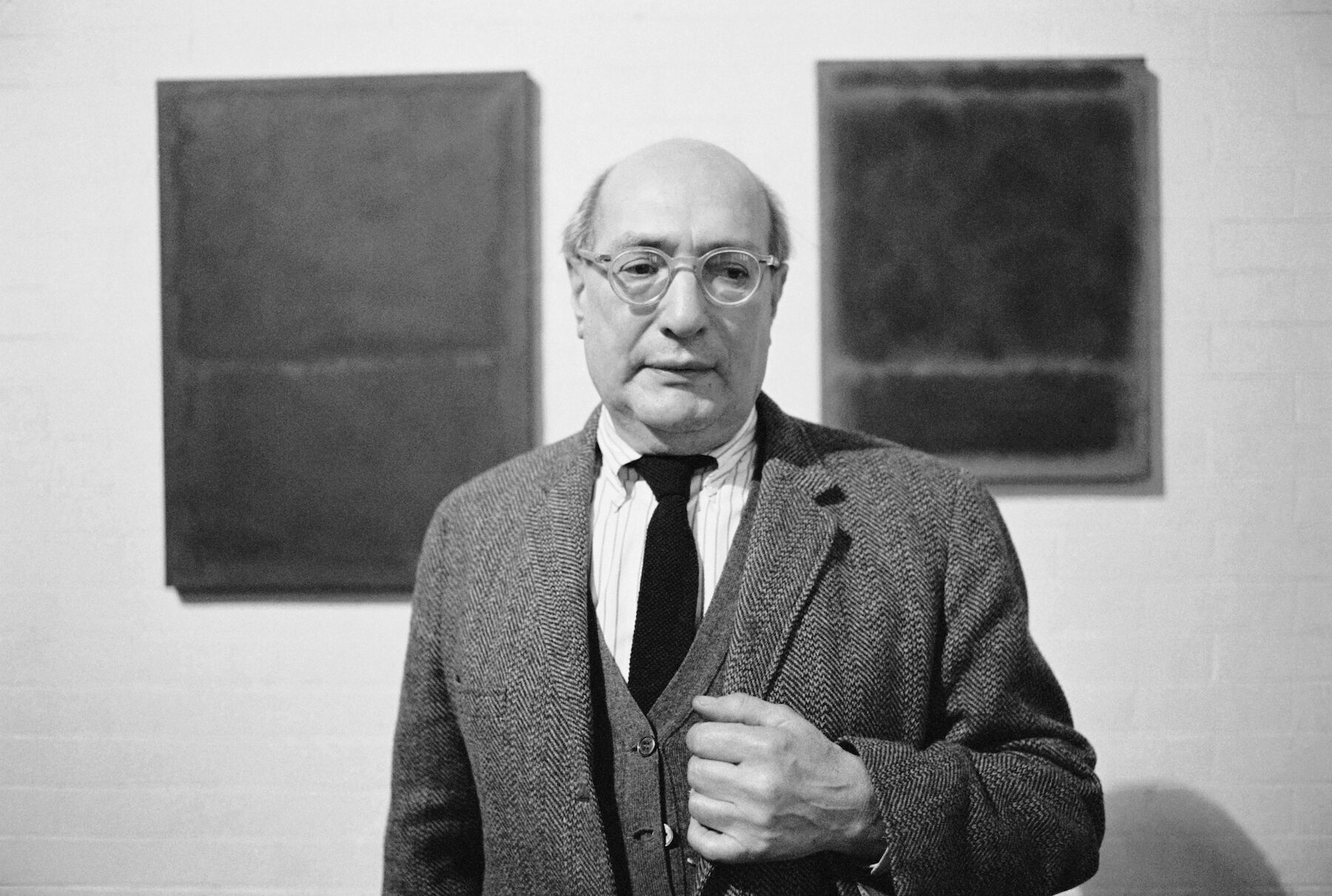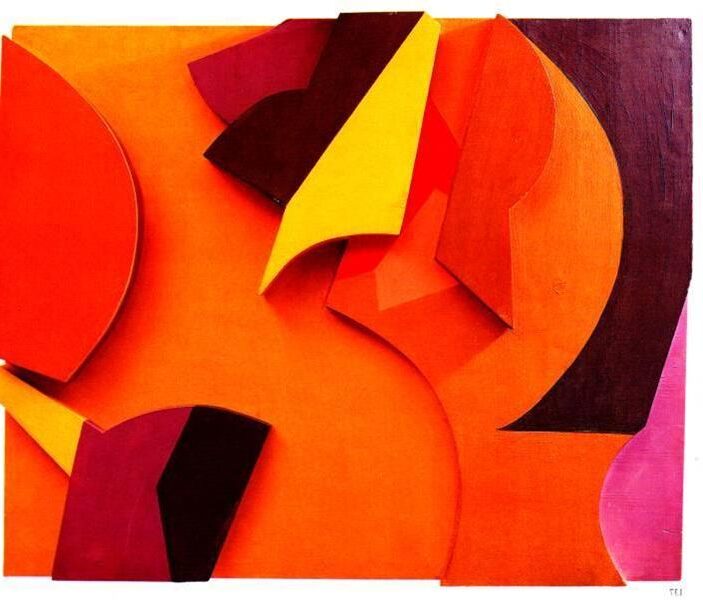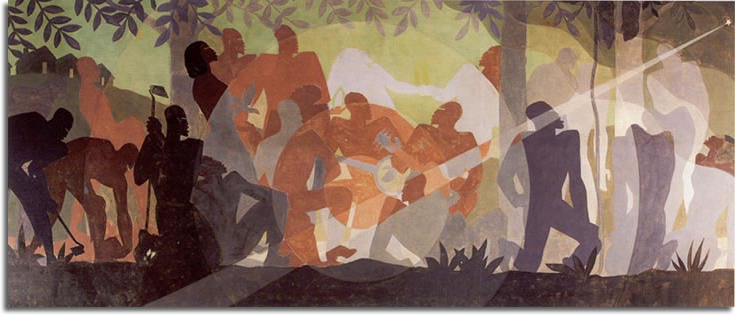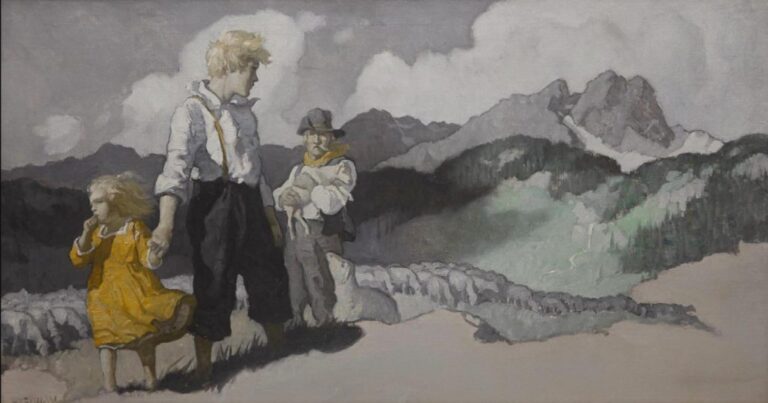Mark Rothko Painter: The Revolutionary Abstract Expressionist of the 20th Century
Born: September 25, 1903, Dvinsk, Latvia
Death: February 25, 1970, New York City, U.S.
Art Movement: Abstract Expressionism, Color Field
Nationality: Latvian-American
Teachers: Arshile Gorky and Max Weber
Institution: Parsons The New School for Design and Art Students League
Mark Rothko Painter: The Revolutionary Abstract Expressionist of the 20th Century
Life and Career
Mark Rothko’s journey from immigrant child to influential abstract expressionist spanned several decades of artistic evolution. His life was marked by personal struggles and professional triumphs that shaped his distinctive approach to art.
Early Life and Education
Born Marcus Rothkowitz on September 25, 1903, in Dvinsk, Russia (now Latvia), Rothko immigrated to the United States with his family in 1913. They settled in Portland, Oregon, where he spent his formative years.
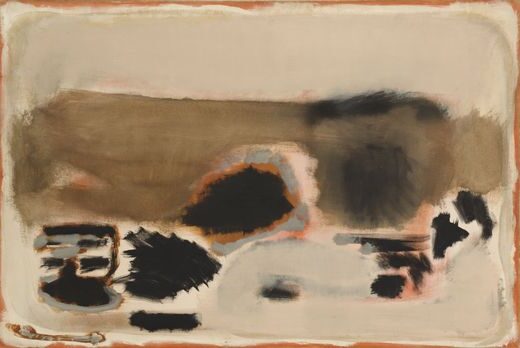
No.5/No.24, 1948 by Mark Rothko
Despite showing early academic promise, Rothko abandoned his studies at Yale University after two years. He moved to New York City in 1923, beginning his artistic education at the Art Students League.
Initially, Rothko studied under Max Weber, absorbing influences from European modernism. His early training was traditional, focusing on figure drawing and painting techniques that would later evolve dramatically.
During the Great Depression, Rothko worked for the Works Progress Administration, painting murals that helped refine his skills while providing financial support.
Development of Artistic Style
Rothko’s artistic evolution proceeded through several distinct phases. His early work featured urban scenes and subway imagery with distorted figures reflecting social concerns of the 1930s.
By the mid-1940s, he embraced surrealism, creating biomorphic shapes and mythological references. These works displayed increasing abstraction and emotional depth.
The breakthrough to his signature style came around 1949. Rothko began creating large canvases with rectangular color fields that seemed to float and pulse with inner light.
His mature style rejected representational elements entirely. Instead, he focused on color relationships that created powerful emotional and spiritual experiences for viewers.
Rothko insisted his works weren’t about color alone, but rather about basic human emotions—”tragedy, ecstasy, doom.”
Significant Career Milestones
Rothko’s first solo exhibition was held at the Contemporary Arts Gallery in New York in 1933. While not immediately successful, it marked his entry into the professional art world.
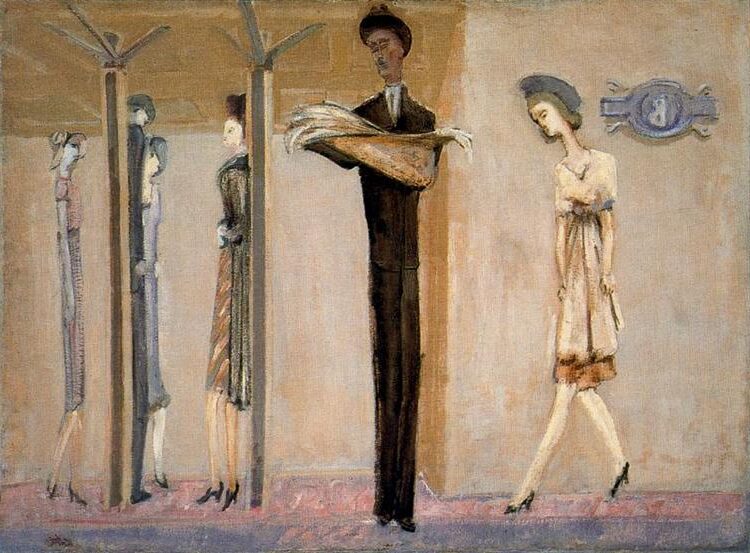
Underground Fantasy, c. 1940 by Mark Rothko
In 1943, he exhibited alongside Adolph Gottlieb and Barnett Newman, helping establish what would become known as the New York School of abstract expressionism.
The 1950s brought wider recognition and financial success. The Museum of Modern Art acquired his work in 1952, cementing his importance in contemporary art.
Lock Modified Date
A major commission came in 1958 when Rothko created murals for the Four Seasons restaurant in the Seagram Building. He later withdrew from the project, concerned his art would become mere decoration.
The Rothko Chapel commission in Houston, begun in 1964, represented his most ambitious sacred space filled with monumental dark paintings.
Later Years and Death
The 1960s brought increasing recognition but also personal struggles for Rothko. He suffered from depression and health problems, including heart issues and an aortic aneurysm.
His palette darkened considerably during this period. Later works featured deep maroons, browns, blacks, and grays that created more somber, meditative experiences.
Rothko separated from his second wife, Mell, in 1969, further deepening his isolation and psychological difficulties.
On February 25, 1970, Rothko’s assistant found him in his studio. He had died by suicide at age 66, having cut his arms with a razor.
After his death, a legal battle erupted over his estate. Many paintings were sold fraudulently by his gallery before his children eventually regained control through court action.
Artistic Style and Influence
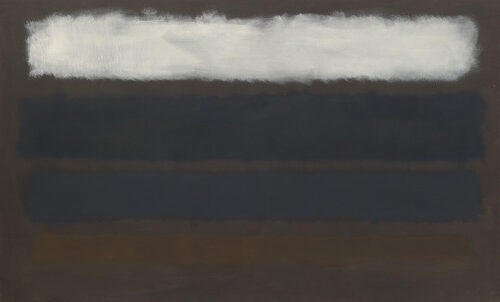
No. 14 (Horizontals, White over Darks), 1961 by Mark Rothko
Mark Rothko developed a distinctive artistic approach that revolutionized modern painting. His unique use of color and form created emotional experiences for viewers while establishing new possibilities for abstract art.
Abstract Expressionism
Rothko emerged as a key figure in the Abstract Expressionist movement during the 1940s and 1950s. Unlike the gestural style of contemporaries like Jackson Pollock, Rothko focused on color relationships and large-scale compositions.
His early career included surrealist-inspired works, but by the mid-1940s, he began moving toward his signature style. This transition period, often called his “multiforms,” featured irregular blocks of color floating against colored backgrounds.
Rothko rejected the label “abstract expressionist,” preferring to emphasize the emotional and spiritual qualities of his work. He once stated: “I’m not interested in the relationship of color or form or anything else. I’m interested only in expressing basic human emotions.”
Color Field Painting
Rothko pioneered Color Field painting with his iconic rectangular forms of luminous color. These compositions typically featured two or three rectangular blocks with softened, feathered edges.
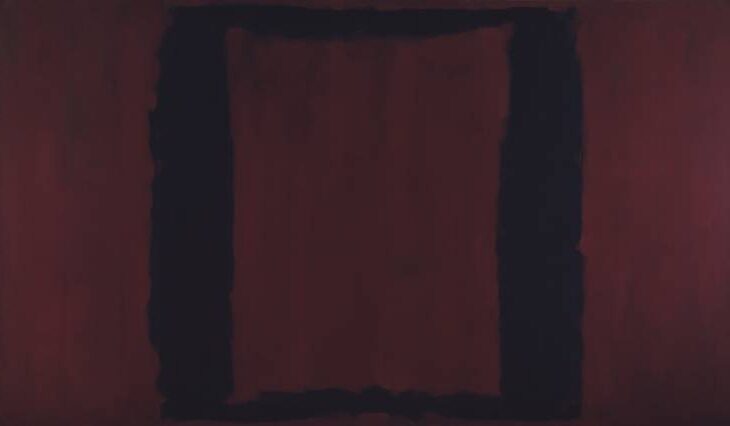
Black on Maroon, 1959 by Mark Rothko
His mature style employed thin layers of paint that created a sense of depth and inner light. Rothko mixed his own pigments to achieve specific hues and translucencies.
The scale of his works was deliberately large to create an immersive viewing experience. He insisted his paintings be hung low on walls so viewers could feel enveloped by the color.
His palette evolved throughout his career, from vibrant oranges and yellows in the 1950s to darker maroons, blacks, and grays in his later years. This shift reflected his increasingly somber emotional state.
Influence on Modern Art
Rothko’s work transformed how artists approached abstraction and emotional expression. His focus on creating environmental experiences through art directly influenced installation and environmental art.
Contemporary artists like James Turrell and Olafur Eliasson acknowledge Rothko’s influence in their light-based installations. His emphasis on viewer experience also shaped how museums display abstract art.
The Rothko Chapel in Houston, completed after his death, exemplifies his vision of art as a spiritual experience. This non-denominational chapel features fourteen of his dark paintings.
Major museums worldwide now display Rothko’s works as essential pieces of modern art history. His paintings regularly achieve record-breaking prices at auctions, confirming his lasting significance.
Major Works and Exhibitions
Mark Rothko created hundreds of significant artworks throughout his career, with his most celebrated pieces appearing in prestigious museums worldwide. His distinctive color field paintings earned him international recognition and continue to influence modern art.
Notable Paintings
Rothko’s most important works emerged after 1950 when he developed his signature style of rectangular color fields. “Orange and Yellow” (1956) exemplifies his mature style with luminous orange rectangles floating against a yellow background.
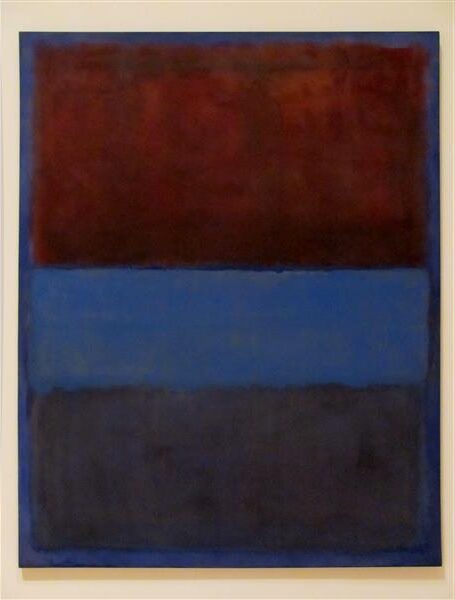
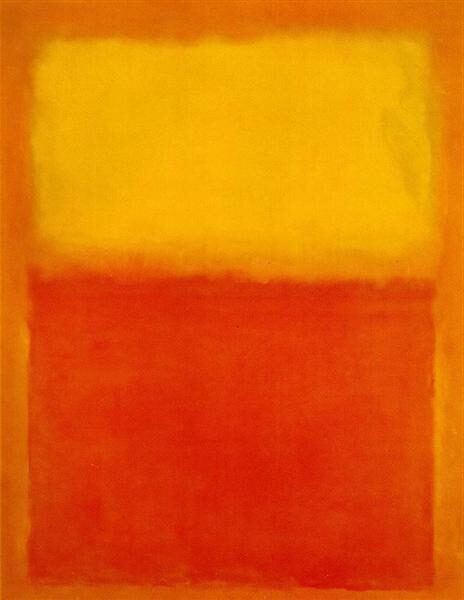
“No. 61 (Rust and Blue)” (1953) uses contrasting colors to create a sense of depth and emotion. The painting invites viewers to experience rather than simply observe the work.
“Black on Maroon” (1958) represents Rothko’s darker period, featuring deep maroon and black rectangles that create a somber, meditative quality. This work was part of his famous Seagram Murals commission.
“White Center” (1950) sold for $72.8 million in 2007, setting a record for post-war art at the time. The painting features yellow and pink blocks surrounding a white center.
Critical Acclaim and Reception
Critics initially struggled to categorize Rothko’s work, though he rejected the Abstract Expressionist label others applied to him. He preferred viewers to have emotional rather than intellectual responses to his paintings.
Art critic Clement Greenberg championed Rothko’s work, helping establish his reputation in the 1950s. Greenberg saw Rothko’s paintings as the pinnacle of color field painting.
The Museum of Modern Art’s 1961 exhibition solidified Rothko’s position as a major American artist. Critics praised his ability to evoke profound emotional responses through simple forms.
Rothko’s refusal to explain his work often frustrated critics but enhanced the mysterious quality of his paintings. He believed art should speak for itself rather than be explained.
Permanent Collections and Retrospectives
The Rothko Room at the Phillips Collection in Washington, D.C. was designed with the artist’s input in 1960. It displays four paintings in a dimly lit space creating an immersive, chapel-like experience.
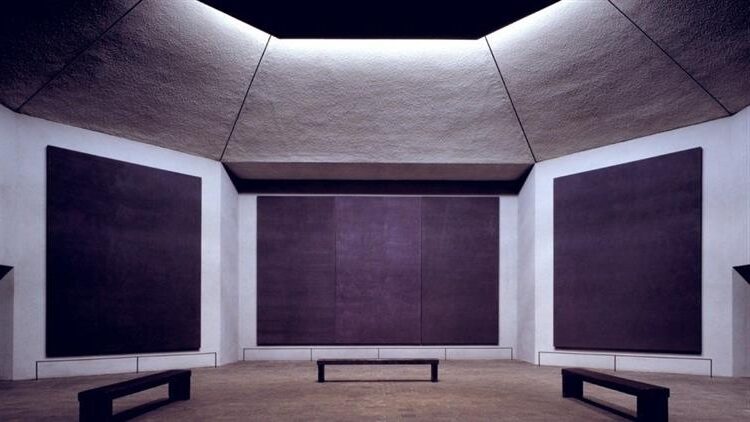
Rothko Chapel, c. 1970 by Mark Rothko
The Tate Modern in London houses the Seagram Murals, which Rothko donated after withdrawing from the original restaurant commission. These nine dark maroon paintings create a powerful, contemplative environment.
The Rothko Chapel in Houston, founded in 1971, contains 14 of his darkest paintings. This non-denominational space combines art and spirituality, fulfilling Rothko’s vision of art as a spiritual experience.
Major retrospectives at New York’s MoMA (1961), the Guggenheim (1978), and the National Gallery of Art (1998) have celebrated his legacy. Each exhibition has introduced new generations to Rothko’s transcendent color fields.
Frequently Asked Questions
Mark Rothko’s distinctive artistic approach has sparked many questions about his techniques, influences, and legacy. These questions help us better understand his significant contributions to modern art and his unique visual language.
What are the distinguishing characteristics of Mark Rothko’s painting style?
Rothko’s mature style featured rectangular blocks of color with soft, feathered edges floating against colored backgrounds. He used thin layers of paint to create luminous, glowing effects that seem to pulse with inner light.
His compositions typically lack representational elements, focusing instead on the emotional impact of color relationships. Rothko’s paintings are often large-scale, designed to envelop viewers and create an intimate, contemplative experience.
The artist paid careful attention to the proportions and placement of his color blocks, creating a sense of balance that feels both dynamic and meditative.
How did Mark Rothko contribute to the Abstract Expressionism movement?
Rothko was a pivotal figure in Abstract Expressionism, though his quiet, meditative works contrasted with the energetic gestures of painters like Pollock. He helped expand the movement’s emotional range through his focus on color’s psychological impact.
His color field approach became an influential subcategory within Abstract Expressionism. Rothko’s emphasis on creating transcendent experiences through art aligned with the movement’s interest in expressing profound human emotions.
He participated in important exhibitions that defined Abstract Expressionism, including shows at the Museum of Modern Art. His theoretical writings helped articulate the philosophical underpinnings of the movement.
Can you explain the significance of color in Mark Rothko’s works?
Color was Rothko’s primary vehicle for emotional expression. He believed specific color combinations could trigger deep psychological and spiritual responses in viewers.
Rothko meticulously built up thin layers of paint to create colors with unusual depth and luminosity. His later works often featured darker hues—maroons, deep blues, and blacks—reflecting his increasingly somber outlook.
The artist rejected purely decorative or aesthetic approaches to color, insisting his choices served profound emotional purposes. He once stated: “I’m interested only in expressing basic human emotions—tragedy, ecstasy, doom.”
What is the historical context behind Rothko’s shift to his signature multiform style?
Rothko’s evolution toward his signature style occurred during the tumultuous post-World War II period. The horrors of war and the atomic bomb left many artists questioning traditional artistic approaches.
By the late 1940s, Rothko abandoned recognizable imagery, developing his “multiform” paintings with irregular patches of color. This artistic shift paralleled broader cultural movements away from literal representation toward more abstract expressions of human experience.
His artistic transformation also coincided with the rising influence of existentialist philosophy, which emphasized subjective experience and the search for meaning in an uncertain world.
Which of Rothko’s paintings are considered his most pivotal or iconic, and why?
“No. 10” (1950) exemplifies Rothko’s transition to his mature style, featuring vibrant red and yellow rectangular forms that seem to float on the canvas. The Seagram Murals (1958-1959) represent an important commission that Rothko ultimately declined, revealing his artistic integrity.
The Rothko Chapel paintings in Houston (1964-1967) mark the culmination of his artistic journey. These fourteen dark purple and black canvases create an immersive spiritual environment that transcends religious boundaries.
“Orange and Yellow” (1956) remains one of his most recognizable works, demonstrating his masterful use of luminous color to evoke profound emotional responses.
How has Mark Rothko’s artistic legacy influenced contemporary art?
Rothko’s approach to creating immersive visual experiences influenced installation art and environmental art. Contemporary artists like James Turrell have expanded on Rothko’s interest. They create spaces that evoke emotional and spiritual responses.
His emphasis on art’s emotional impact continues to inspire artists. These artists seek to create profound connections with viewers. Rothko’s color field approach influenced minimalism and other reductive art movements that followed Abstract Expressionism.
His market value has soared posthumously, with paintings selling for tens of millions of dollars. This commercial success has helped cement his position as one of the most significant artists of the 20th century.


